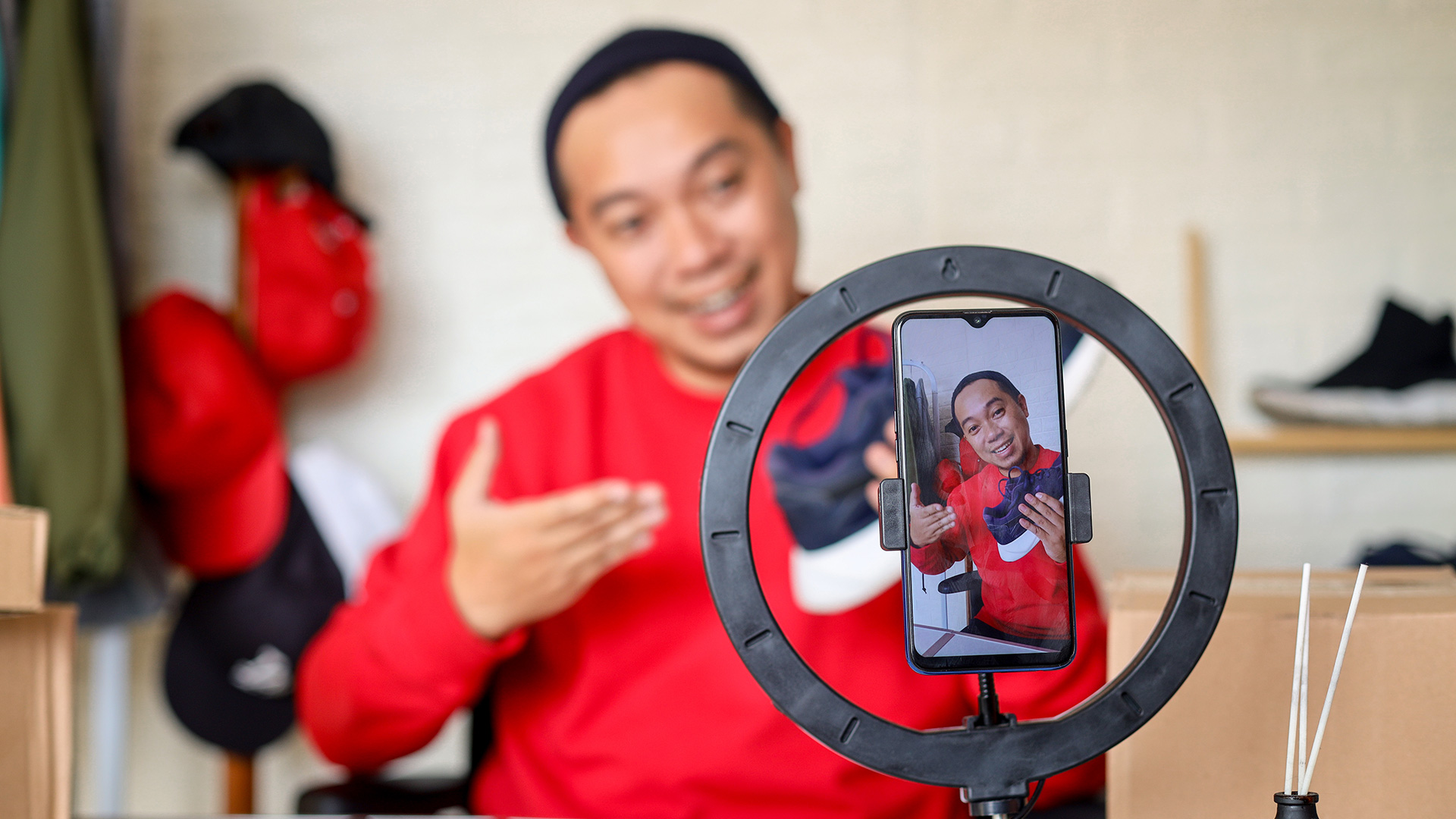
Consumers increasingly use social media to browse for and buy products, often turning to their favorite influencers for recommendations. That makes influencers the new pitchmen, with businesses trying to figure out whom to work to sell more. New research from P.K. Kannan at the University of Maryland’s Robert H. Smith of Business reveals how companies should pick influencers to maximize sales.
Kannan, the Dean’s Chair in Marketing Science and associate dean for strategic initiatives, worked with Smith grad Xian Gu, PhD ’19, now at Indiana University, and Xiaoxi Zhang of Stonybrook University to look at how an influencer’s number of followers impacted the total sales for livestream marketing campaigns.
Kannan explains the process like this: Marketers reach out to influencers who have lots of followers because of their organic content – the information they share like fashion and makeup tips, parenting advice, financial guidance, exercise info and home decorating how-tos. If a product is aligned with an influencer’s brand, they may decide to pitch it.
Brands are also selective in choosing which influencers to work with. They pay influencers – often a lot of money – so it’s important to choose the right influencers, or mix of influencers.
That’s where Kannan’s research comes in.
“Our research looks at how companies can pick influencers to work with on livestreaming campaigns,” says Kannan.
E-commerce giants like Amazon and platforms including TikTok and Instagram use livestreaming to amplify the social shopping experience. Shoppers tune into influencers’ live online videos and interact with them in real-time as they show off a product that can be purchased from a link right there – almost like the social media version of television home-shopping network QVC.
Kannan and his co-authors used data from TikTok livestreams in China. This is the first research to look at how influencers impact actual sales because the researchers were able to see how often viewers clicked livestream links to make purchases.
They looked at different tiers of influencers – “mega” influencers, with 1 million or more followers, down to “micro” influencers, who have less than 50,000 followers – and what happens for a product’s sales when different influencers do the pitching.
“Our idea was to find out, if I’m a brand, should I just go with the mega influencer? Should I have a bunch of smaller influencers? Or should I have a mix of both?” says Kannan.
The researchers find that products pitched by the biggest influencers see the most sales. That’s because mega influencers’ livestream pitches reach the most followers – sometimes millions at a time – so even if the conversion rate of people who actually buy the item is small, it’s a numbers game, says Kannan. “Mega influencers are able to reach a lot of people, but their personal touch with consumers isn’t very high, so their conversion rate for sales is low.”
Smaller influencers with fewer followers are better at closing sales and have higher conversion rates – more than double the rate of mega influencers.
“The mini- or micro-influencers have more time for one-on-one interactions with their followers,” Kannan says. “They can be much more persuasive in getting viewers to buy something.”
One finding that stands out, says Kannan, is that marketers should be very careful about using a mix of big and small influencers to pitch the same product.
“We found that when you have both big influencers and small influencers, it has a negative interaction,” he says.
That’s because if a consumer sees a big influencer and a smaller influencer pitching the same product – thanks to the algorithms that automatically populate people’s social media feeds with all the influencers pitching the same things – they might see that product as not that exclusive or interesting when it seems like everyone is pitching it. In particular, people seem to distrust the big influencers when they see the same product being pitched by small influencers. So if using a mix of influencers, marketers need to be strategic, says Kannan.
“If you have the money, it’s better to spend on one big influencer rather than wasting your time on lots of small influencers,” says Kannan. “If you want to have a combination of big and small influencers, start with the big influencers first, then the smaller influencers. If you can only afford small influencers, know their reach is not very high but they have a higher conversion rate on sales. It will take a lot of small influencers to reach as many people as working with a big influencer.”
Kannan says there is still a lot to learn about influencer marketing. He continues to research the topic and cover it in his digital marketing classes.
“Influencer marketing is here to stay and it is going to become another established form in the marketing mix as a way to reach out to consumers. The amount of marketing spending happening on social media, including influencer marketing, is going to go up. This topic is going to become more important.”
Read the research, “Influencer Mix Strategies in Livestream Commerce: Impact on Product Sales,” forthcoming in the Journal of Marketing.
Media Contact
Greg Muraski
Media Relations Manager
301-405-5283
301-892-0973 Mobile
gmuraski@umd.edu
Get Smith Brain Trust Delivered To Your Inbox Every Week
Business moves fast in the 21st century. Stay one step ahead with bite-sized business insights from the Smith School's world-class faculty.